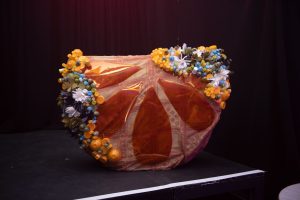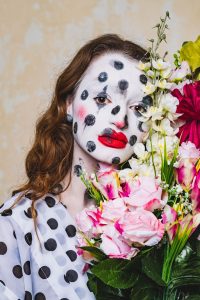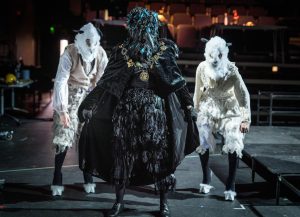Hello, my name is Bobby and I’m a third year joint honours student in the Department of Theatre and Performance, and the Department of Film and TV here at the University of Bristol. As a part of my final semester with the University, I have chosen to work on a unit called ‘professional development in theatre and performance’; a unit that is designed for students to connect with organisations outside of the academic context of the course, and to learn to develop soft skills relevant to working in industry as an artist and creative. After conversing with the brilliant staff at the Theatre Collection, I chose to work as a Artist-in-Residence with them. The project aims to create a performative installation work at the end of an archive-based research and experimentation period.
As a third year Theatre and Film student, I’ve been lucky enough to have been exposed to the archive in previous units and have gained an understanding for both how their systems work, but also the process of thought required to interrogate material and to carefully piece together the histories of productions, projects and people. A previous project titled ‘Awaiting its Fate’ was performed last year at the Bristol Old Vic and was designed by myself. Aimed at blurring the history of the theatre into the buildings’ foundations, I worked closely with archival materials to inform a soundscape of an auction for the building in 1942 and the final performance allowed audiences to imagine that they were listening through the walls of the BOV at events that happened in the 40s. It was the first time where I had found the value and interest of the cross section between archival materials and technology; the blurred lines and creative possibilities that it holds as a way of reinvigorating once forgotten material, but also showcasing to others the capabilities that the archive itself holds.

My own passion in theatre is rooted in set and AV design. I have experimented with technologically mediated spaces and performances that utilised elements like projection and three dimensional audial soundscapes as a way of world building but also informing creative choices to highlights relationships, themes and motifs. I strongly feel that a playful perspective on bringing technology into performance is a brilliantly versatile way of doing this, while also allowing that traditional ‘magic’ held at the theatre to continue.
Before I pursue a postgraduate degree in performance design, I’m taking time to broaden my understanding of how we can use the past as a way of informing our future artistic expressions, and how archives such as the theatre collection aren’t just valuable for researchers, but also for active and freelance artists. During the first few months on my placement, I have taken time to dig deep into materials otherwise unknown to me.
Beginning with an interest and past experience in analogue photography, I began there, exploring key individuals that may have led lives as photographers. This is where I discovered John Vickers, an experimentalist photographer right from the age of 12 when he picked up his first ever camera at a church jumble sale.

The life and work of Vickers is extensive, and the Theatre Collection’s archive of his prints and negatives drew a kind of curiosity out of me, and led to my choice to centre my installation around his work. Namely, there is a fascinating collection of glass print negatives from early in his life that left me speechless when they were uncovered. Described in the Theatre Collection catalogue as 27 monochromatic exposures, what I discovered was something far more amazing. As I begin my experimentation process with these prints, I’m excited to not be able to see what unique twists and turns are in my creation process. It’s a brilliant example as to why rabbit holes in the archive aren’t so bad after all, in fact they can sometimes be quite the opposite and find you somewhere you would never expect.
Keep checking the Theatre Collection’s blog page for updates about this exciting project!
Bobby




